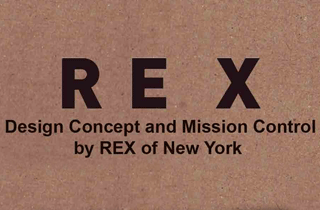One thing young architects can't do, of course, is hire firms like Kreisberg, which can charge $5,000 per month or more for representation. That's the catch-22: Only the most successful architects can afford the publicists whose job is to help them become successful.
Over the years, I've met with many architects who I knew couldn't afford to hire me. I'd give them lots of free advice.
The first thing I'd say is, send out regular mailings, maybe two or three a year, with photos of your work. And I don't mean e-mails. For one thing, the color has to be perfect— you're trying to make your work look really good. Your list should include every journalist you can think of—you can get their names o. magazine mastheads—and anybody you've already done a project for. You want your former clients to know you're still open for business.

It's OK to publicize losing competition entries. In the architecture world, everybody understands that losing a competition is no great shame.

In fact, entering a lot of competitions is another way to get your name out. Someone may remember that you lost, but had a good idea.
Try to do as many public projects as you can. Restaurants, in particular, are a good way to become known. First, all of the customers will see your work. Second, lots of publications that don't cover architecture do cover restaurant openings. And third, restaurants have P.R. budgets. And the best way to get P.R., if you don't have a lot of money, is to piggyback on your client's budget. I've represented some very well-known architects—not Calatrava—who have never spent a penny on P.R.; the client always paid the bill.

Whatever kind of project you're doing, it's a good idea to talk to the client in advance about whether you'll be allowed to publish. Otherwise, you may have a hard time publishing residential projects—homeowners may have privacy concerns—or even jobs for corporate clients who don't necessarily want shareholders to see how much money they've spent. Still, at the end of the day, you have to accept your client's decision. One sure way to lose a reference is to publish behind a client's back.
Word of mouth is the most important thing in landing clients, but publicity can spark it. People have short memories, and when they're putting together a list of architects for a project, it's going to be the ones whose names they've seen or heard in the last few weeks or months.

Get friendly with journalists but don't plague them. Journalists need information, and they rely on people coming to them, as long as you don't overdo it.

ALSO SEE THESE RELATED NOTES FROM PREVIOUS WEEKS:
2. Use stratagies of a publicist to get in the news
17. Blow your own horn!
28. Say you are an architect
By Fred Bernstein






























































